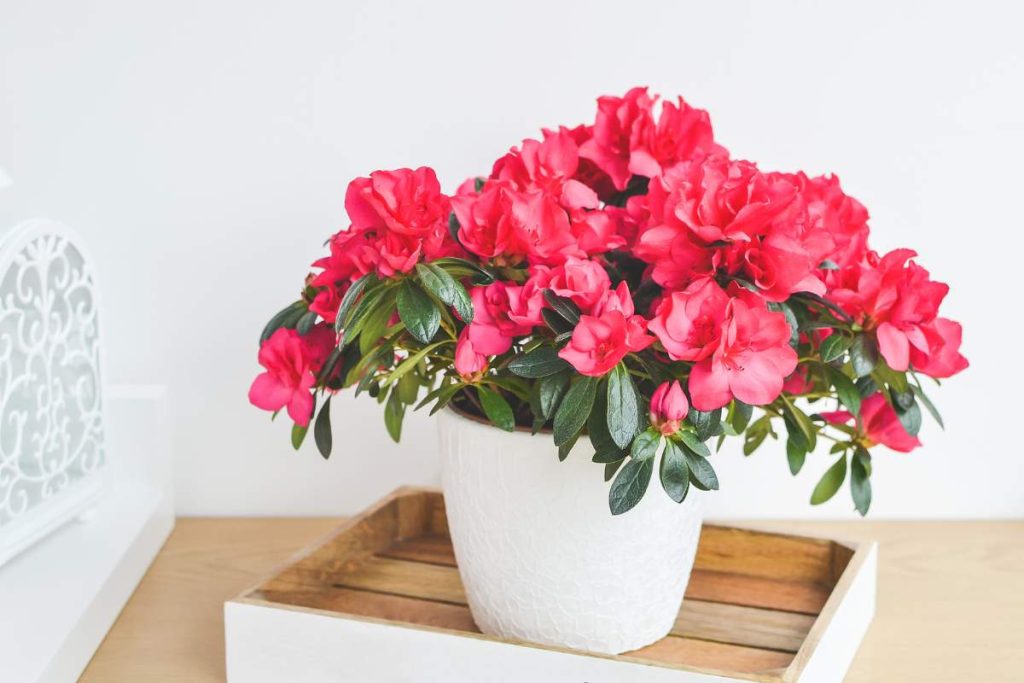Azaleas are stunning spring-blooming shrubs that add a pop of color to any outdoor space. Their bright flowers come in shades of pink, purple, white, and red. Azaleas are so beloved that there’s even a festival dedicated to them in Atlanta, Georgia each spring.
While azaleas are hardy plants, keeping azaleas in pots through the winter requires some special care. When azaleas are planted in the ground, their roots are insulated by the soil. But azaleas in pots have their roots fully exposed to the elements. This makes them more vulnerable to damage from frigid winter temperatures.
Follow these tips to help your potted azaleas survive and thrive through the colder months:
Choose the Right Pot
Pick a container that’s large enough for your azalea’s root ball, with a couple extra inches around the edges Make sure the pot has drainage holes in the bottom to prevent soggy soil
Terra cotta and ceramic pots work well for azaleas They’re porous so excess moisture can evaporate. This prevents rotting. Plastic and glazed ceramic pots aren’t as breathable.
Make sure your pot can withstand freezing winter temperatures without cracking. Some plastic, terra cotta, and ceramic pots can’t handle extreme cold.
Use Insulating Materials
Since azalea roots in pots are exposed, you need to provide insulation. Wrap foam insulation sheets around the pot. Make sure no insulation touches the plant’s stems.
You can also bury the lower half of the pot in mulch or leaves. This mimics the insulation roots would get if planted in the ground.
For extra protection, place the potted azalea near the foundation of your home or against a sheltered wall. The radiant heat from the building will warm the plant’s roots.
Water Sparingly
Azaleas require moist soil, but take care not to overwater during winter. Only water when the top inch of soil feels dry. Watering too often can lead to root rot.
Never water if the temperature is below freezing. Water expands when it freezes, which can crack your azalea’s pot.
Remove any excess water from pot saucers so the plant isn’t sitting in puddles. And make sure the pot has drainage holes so water doesn’t pool at the bottom.
Avoid Wind Exposure
Wind can damage azaleas by drying out their foliage. Place your potted azaleas in a sheltered area away from wind.
You can surround the plants with windbreaks such as fences, walls, or evergreen shrubs. Just don’t block sunlight azaleas need for photosynthesis.
Apply Winter Fertilizer
Fertilize potted azaleas from late fall to midwinter with a slow-release fertilizer high in potassium and phosphorus. These nutrients stimulate strong root growth and prepare plants for abundant spring blooms.
Always follow fertilizer label instructions to avoid burning the plant’s roots with excess chemicals. Stop fertilizing 6-8 weeks before your average last spring frost date.
Prune Selectively
You can prune dead leaves and spent flowers in late fall or early winter. But avoid heavy pruning, which stimulates vulnerable new growth prone to cold damage.
Save major shaping for spring after the last frost. Prune just enough to maintain the plant’s natural shape so it blocks wind.
Monitor for Pests
Check azalea leaves for signs of infestation like sticky honeydew and cottony egg sacks which indicate sap-sucking insects. Apply horticultural oil or insecticidal soap if pests are found.
Remove fallen leaves around the base of plants to eliminate places where pests can overwinter. Always follow product labels when applying pest treatments.
Move Indoors as a Last Resort
If temperatures are extremely low (below 0°F), you can move potted azaleas into an unheated garage or cellar. Make sure the room gets some sunlight from a window. Water very sparingly indoors, just enough to keep soil barely moist.
Once spring arrives and nighttime temperatures are above freezing, you can move azaleas back outside. Transition them slowly, keeping them in semi-shaded spots at first to avoid sun scorch.
With proper winter care, potted azaleas can thrive season after season. The right pot, location, watering routine, and plant protection will keep your azaleas happy despite winter’s chill. Then they’ll reward you with their spectacular blooms come springtime.

How to Grow & Care for Azaleas – Keep Your Plants Healthy & Blooming Year After Year
FAQ
Can potted azaleas stay outside in winter?
Overwintering Potted Azaleas
While shrubs in the garden don’t require much care over winter, azaleas grown in containers do. The roots of potted plants are exposed to cold and can be damaged by frost. Potted plants also quickly dry out from harsh winter winds.
How do you care for potted azaleas?
The plant needs good light, such as morning direct sun and afternoon shade or bright indirect light all day. Azaleas as houseplants do best at temperatures around 60-65° F. Cooler temperatures will also help blooms last longer. Moisture is very important for indoor azaleas.
What to do with azaleas in pots after flowering?
Remove the dead flowers. Repotting can then be done if necessary, increasing the pot size by no more than 2.5-5cm (1-2in) in diameter.
Do I need to cover my azaleas in winter?
-
Cold Hardiness:Azaleas are generally hardy to USDA Plant Hardiness Zones 6-10, meaning they can tolerate winter temperatures in Los Angeles.
-
Plant Age:Young or newly transplanted azaleas may benefit from extra protection, especially if there’s a risk of heavy snow or ice.
-
Weather Forecast:If heavy snow, ice, or extreme cold is predicted, covering azaleas can help prevent damage to their branches and leaves.
